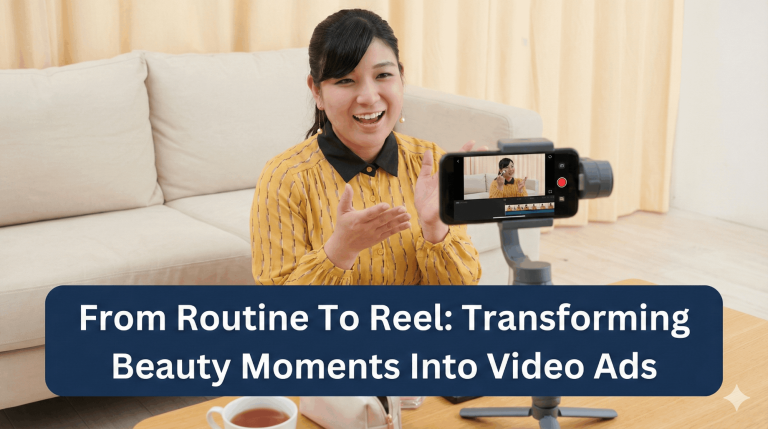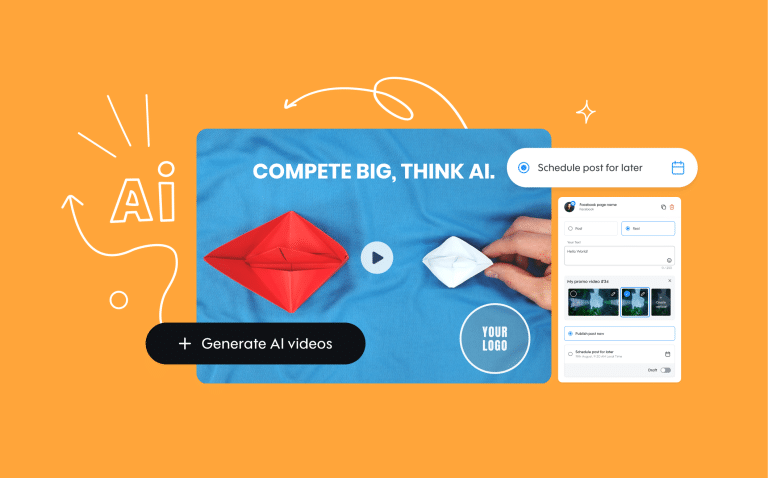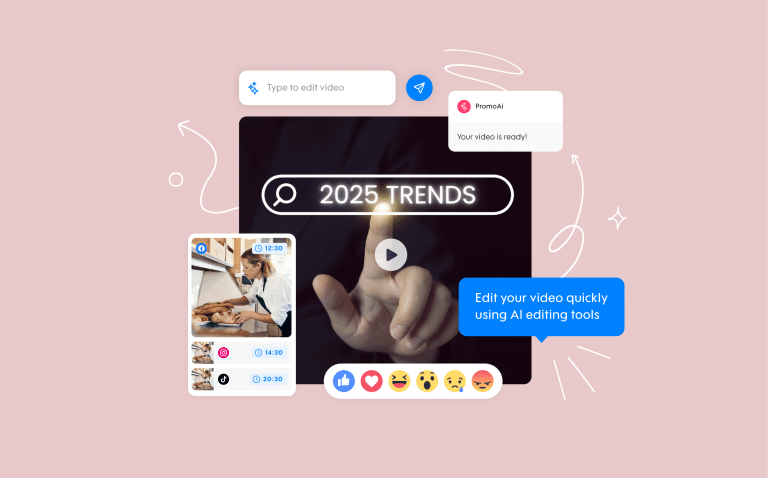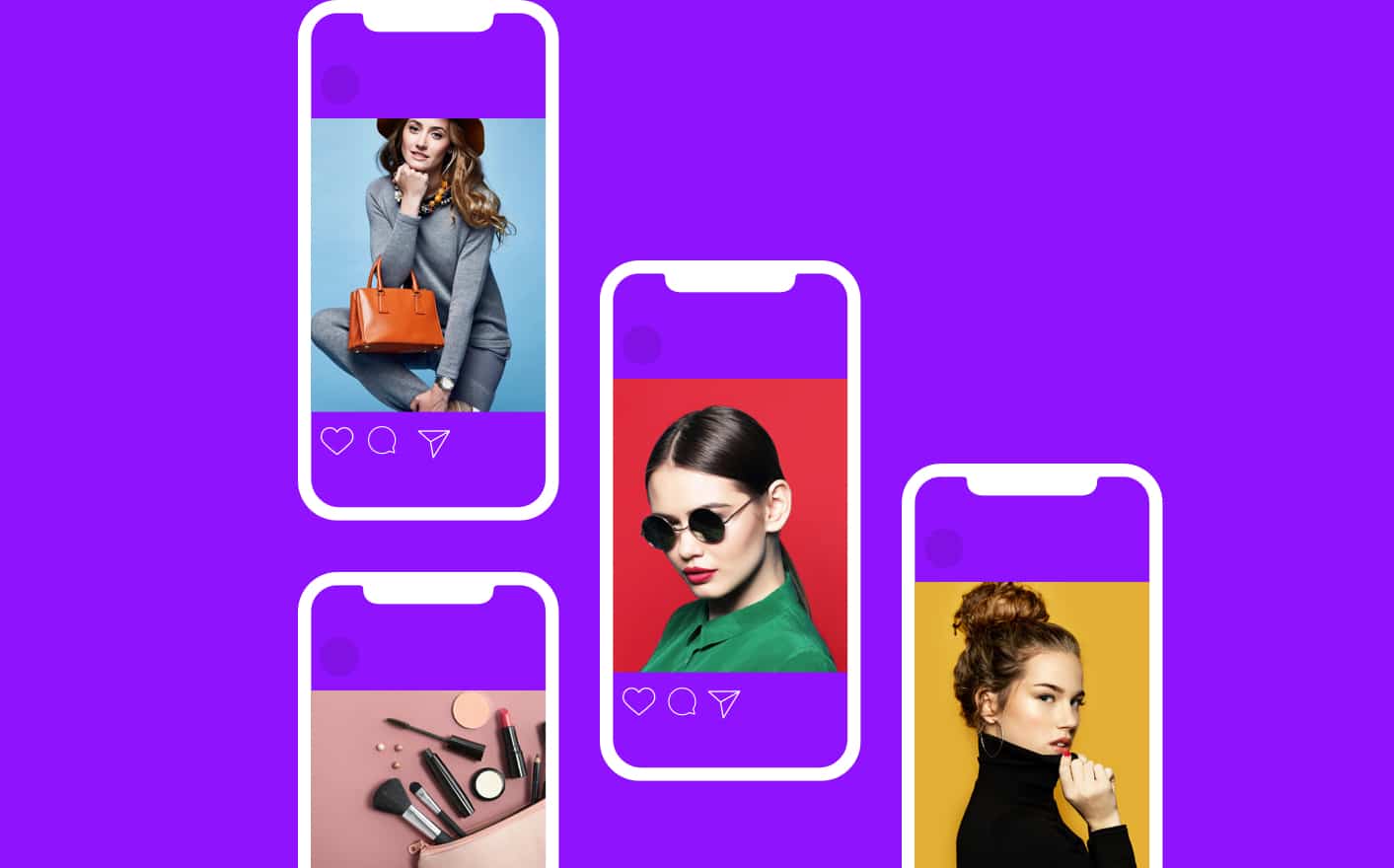
Instagram ads: The best practices for 2020
Instagram ads are super easy to make. In fact, if you simply leave the default “All Placements” option checked while making your Facebook ad campaigns, you’ll automatically make an Instagram ad every time you publish a campaign.
But advanced marketers know that if something’s easy, it’s rarely good.
With the exception of creating stunning marketing videos with Promo.com
That means if you want to squeeze every last drop of ROAS out of your campaigns, you’re going to need to know the Instagram ads best practices. And there is a lot of ROI waiting for you out there on Instagram, if you can go out and grab it. Take a look at some of the results advertisers are achieving on the photo-sharing platform:
- Toronto-based jeweler Clocks and Colours increased ROAS 3.2x.
- TransferWise, a money transfer company, used recipe-themed video ads for Instagram Stories that attracted more 9,000 new registrations.
- Toy manufacturer Milton & Goose drove 38% of unique visitors to their website with Instagram ads
If you’re looking to emulate those types of stats with killer ads, you’ve come to the right blog post. You may be wondering:
Should I be using video or images? What about Stories? How long is the ideal video ad?
We tackle all of these questions (and a lot more) in this post.
Note: If you haven’t run any campaigns on Instagram before, you might want to check out this post first: How to Create Your First Instagram Ad.
We have a ton of Instagram ads best practices to cover, so let’s get started.
Image ads best practices
Instagram is the visual social media platform, so if you don’t have a great image, then maybe this isn’t the right digital channel for you.
But what exactly is a “great image” and how can you make sure you have one? Let’s run through a few tips to help you decide.
Be careful with stock photos
Stock photos have a time and a place where they can be useful, but advertising on Instagram isn’t one of them. People are pretty good at sniffing out stock photography, and when they’re competing with photos from your network (relevant), travel influencers (breathtaking) and food photos (delicious), the juxtaposition from ‘stock’ to ‘fancy’ is even starker.
There are some exceptions to this rule.
The first exception is that you can use (an appropriate) stock photo if you add a text overlay. If you’re just using the photo as a background and the ad copy is what will get a viewer to click through, you can pull it off if done well.
Check out this example from Growth Tools:
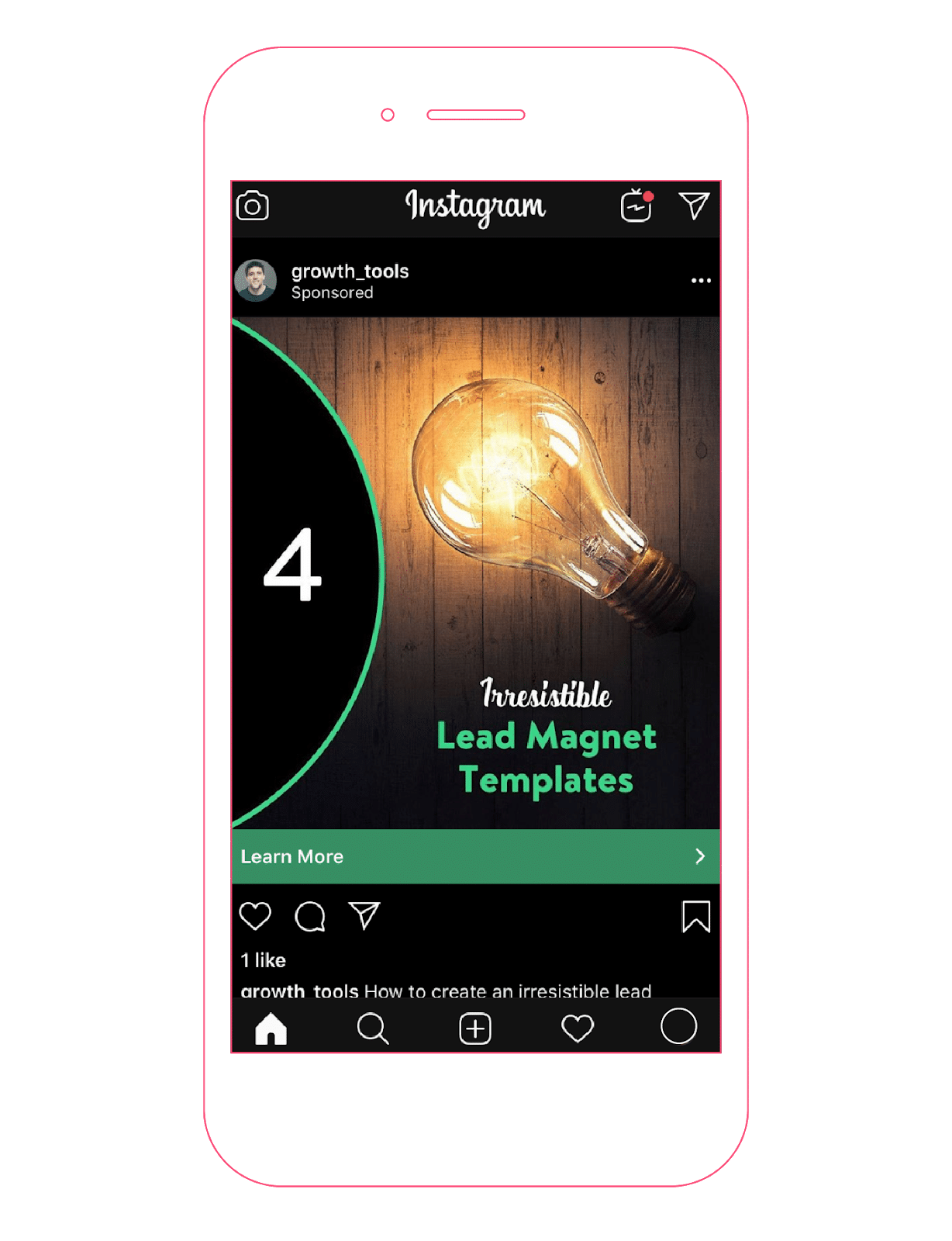
Because this ad is targeted at digital marketers, the headline “Irresistible Lead Magnet Templates” is what we’re interested in, not the photo. Notice that the photo is high quality and aligns with the message, however.
Another exception is when the photo is used as a hook for the start of a longer story. This technique relies heavily on your ability to write effective copy in the captions and should be used with caution.
Swipe right on the carousel ad format
From a UX perspective, the Instagram feed is pretty simple—double tap, comment, and of course, scroll down. Instagram users know these behaviors by heart and execute them almost unconsciously.
Using the Carousel ad format allows you to break this pattern, giving your brand a chance to stand out. Because instead of scrolling down to see more content, the Carousel ad type allows users to scroll side to side. There are a few nifty ways you can take advantage of this feature.
Tell a story: Engage the viewer and create a curiosity gap with your first image. You can do this with copy that you overlay on your photo ads that encourages people to keep reading. Or, you can use a graphic technique that connects the two images visually. Either way, the viewer is compelled to swipe right and keep reading.
In this example from online retailer The Grommet, we can see them tell a story of how these unique maps are created by displaying their content in the Carousel format. This ad actually uses images and videos, so bonus points for creativity and audience engagement.


Another powerful way to use the Carousel ad format on Instagram is to take advantage of Dynamic Ads, one of the most underrated targeting options on Instagram. With Dynamic Ads, you can retarget your website traffic at the product level, not just the site or page level. For e-commerce retailers, this is a nifty way to re-engaged a target audience who has already expressed interest in your products.
Note that because you have to be logged into Instagram to use it, Dynamic Ads can serve content across all your devices with no complicated setup or tracking. These ads tend to be effective because they are served to high-intent users and are optimized for conversion with price, availability and product descriptions all visible within the ad itself.
Dynamic Ads are now officially recommended as part of Facebook’s Power 5 playbook, which means online stores would do well to heed this advice. There are a few extra steps to set up a campaign, but it’s not too difficult:
- Add a product catalogue to your Ad Account
- Connect your product catalogue to your Facebook Pixel
- Configure your retention windows (ad targeting)
- Publish your ads
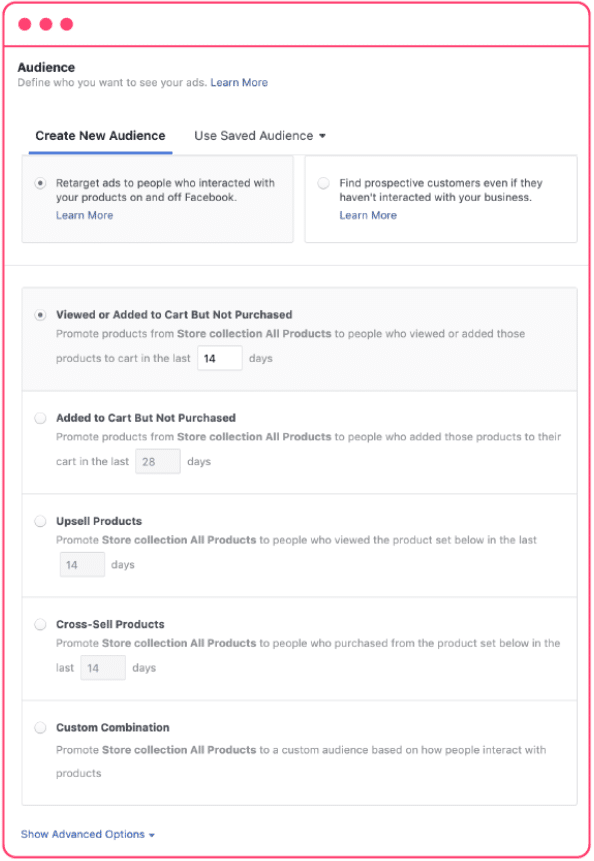
Easy and effective.
User-generated content
By now, pretty much every social media marketer has heard of influencer marketing, or even tried some campaigns. Perhaps you’ve had some success, perhaps not, but one often-overlooked area of influencer marketing is that the primary benefit actually isn’t the access you get to an influencer’s audience—it’s the content your brand receives.
The reason for this is once you sponsor the influencer to create content for you, you also get the rights to that content, which you can use in ads. And ads created from UGC convert better than those created in house. Yotpo, a user-generated content (UGC) marketing platform, studied how UGC affects conversion rates. They found that the average overall conversion rate for six categories they measured was 2.16%. When brands added UGC conversion rates increased to an average 5.65%.
Hopefully this has you some new ideas for your image-based Instagram ad campaigns. But we would be utterly remiss if we didn’t expand our post on Instagram best practices to include an analysis of video ads vs image ads.
Let’s take a closer look at how video, the future (and present!) of marketing works with Instagram ads.
Video ads best practices
While Instagram may have started out as a photo-sharing platform, its users were thirsty for video publishing capabilities inspired by apps like Vine. This is likely why when Instagram first launched its video features in 2013, users uploaded more than 5 million videos within 24 hours!
It’s no different with ads—video is on the rise in terms of audience preference and also advertising effectiveness.
In order to give your audience what they want while also getting what your business wants in terms of results, you’ll want to consider the following video ads best practices for Instagram.
Establish your hook in the first 3 seconds
If we’ve said this once we’ve said it 100x on our blog, but that doesn’t make it any less true, and it certainly doesn’t make it less important.
Without a hook—a clip at the beginning of a video designed to grab viewers’ attention—the rest of your video won’t matter because they won’t stick around to see it. There are tons of ways to hook your viewers, and many are so simple that anybody can do them. Here are five ideas to get you started:
- Use humor—present a funny situation that’s out of the ordinary.
- Use motion—if the subject is walking, the viewer automatically wonders ‘Where’s she going?’
- Use text—Put your offer front and center with a text overlay.
- Use relevance—present a scene of environment that your audience knows well, signaling that this video was made for them.
- Use energy—it’s hard for people to get excited about your business is you’re not, so crank up the energy to 11 (don’t worry, it loses a little on the small screen, so you’re 11 will end up feeling more like an 8 to your audience, which is perfect).
Need some more inspiration? Check out the first 3 seconds of the videos in our article The Best Instagram Video Ad Examples for 2019.
Clarify with captions, subtitles, and/or text
Basically everyone is watching Instagram videos on their phones, and many are watching without the sound on. Ensure that your video ads are accessible to everyone by including captions of what’s being said and what’s happening in the video.
This is by no means an excuse not to have a great soundtrack, however. When a viewer in engaged enough with your video to actually turn the sound on and finds out you don’t have any audio to go with your visuals, it’s quite the letdown.
Your video should work without sound, but work better with it on.
Don’t hope for action, call for it!
Every video you make for Instagram ads, every single one, should include a CTA (call to action). Longer videos might even need two—one in the middle and another at the end.
As you’ve realized by now, there’s a lot of effort involved to create the perfect Instagram video ad—the hook, the messaging, the execution… Don’t let all that work go to waste because you didn’t ask for the user to convert! And last but not least – maker sure you are using the right Instagram video size depending on the format you plan to post on.
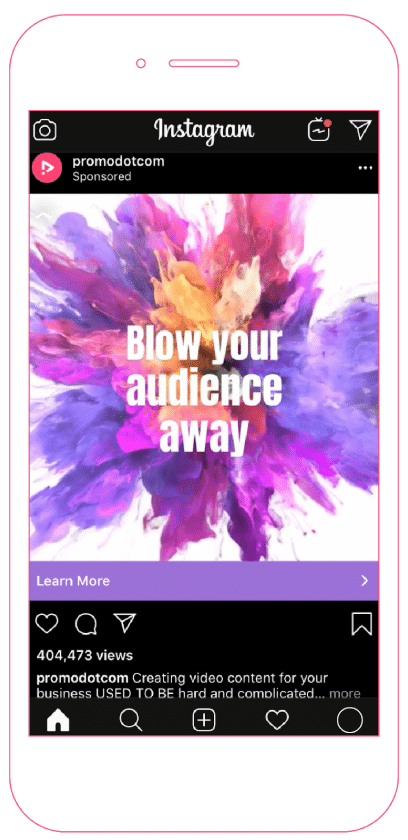
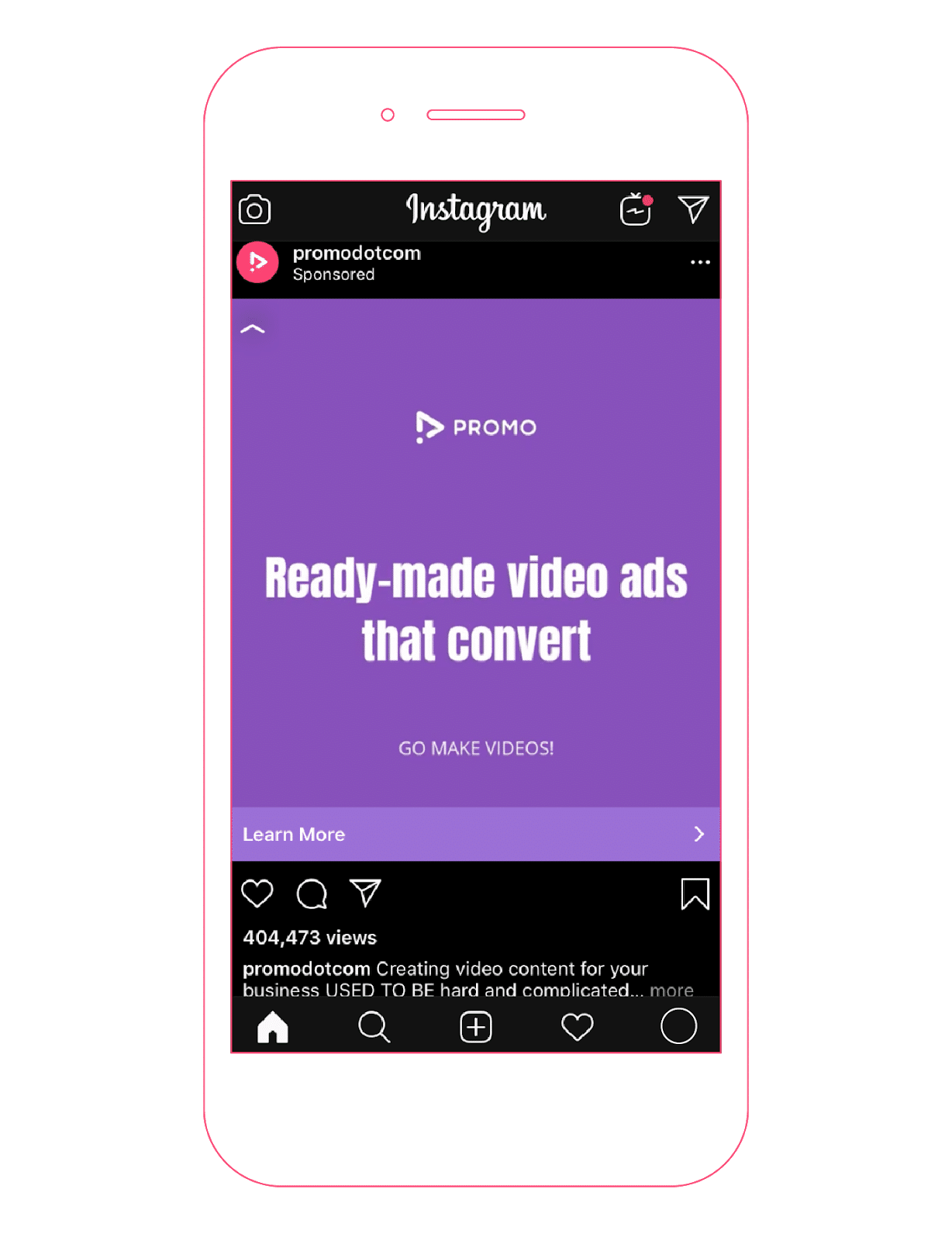
There are two components to an effective CTA.
The first is strategy—make sure that your CTA matches where the video lies in the buying cycle. For instance, a CTA for a brand awareness video ad might be to learn more by visiting a website, landing page, or watching a product video. For conversion-oriented ads, you’ll want to use a more direct CTA, encouraging viewers to show now or schedule a consultation.
Next, you’ll need to execute your CTA with precision. Consider using an end card with your video, which is a screen at the very end of your video with your CTA written out in plain language.
Note: The Promo.com template library has plenty of CTAs to choose from, so feel free to head over there and see a couple examples.
Story ads best practices
In case you haven’t heard, Instagram Stories have become extremely popular.
If you want to get the most out of this Instagram ad placement, you’ll want to design and strategize your ads to take advantage of the unique format. Here are a couple tips to get you started.
Go vertical
Instagram Stories, and IGTV, use the vertical video format, or 1080px by 1920px, to be exact. That said, you should ensure that if you design your videos to this specification going to use this format. Otherwise, you’ll end up with pillar boxing, which can look a bit unprofessional.
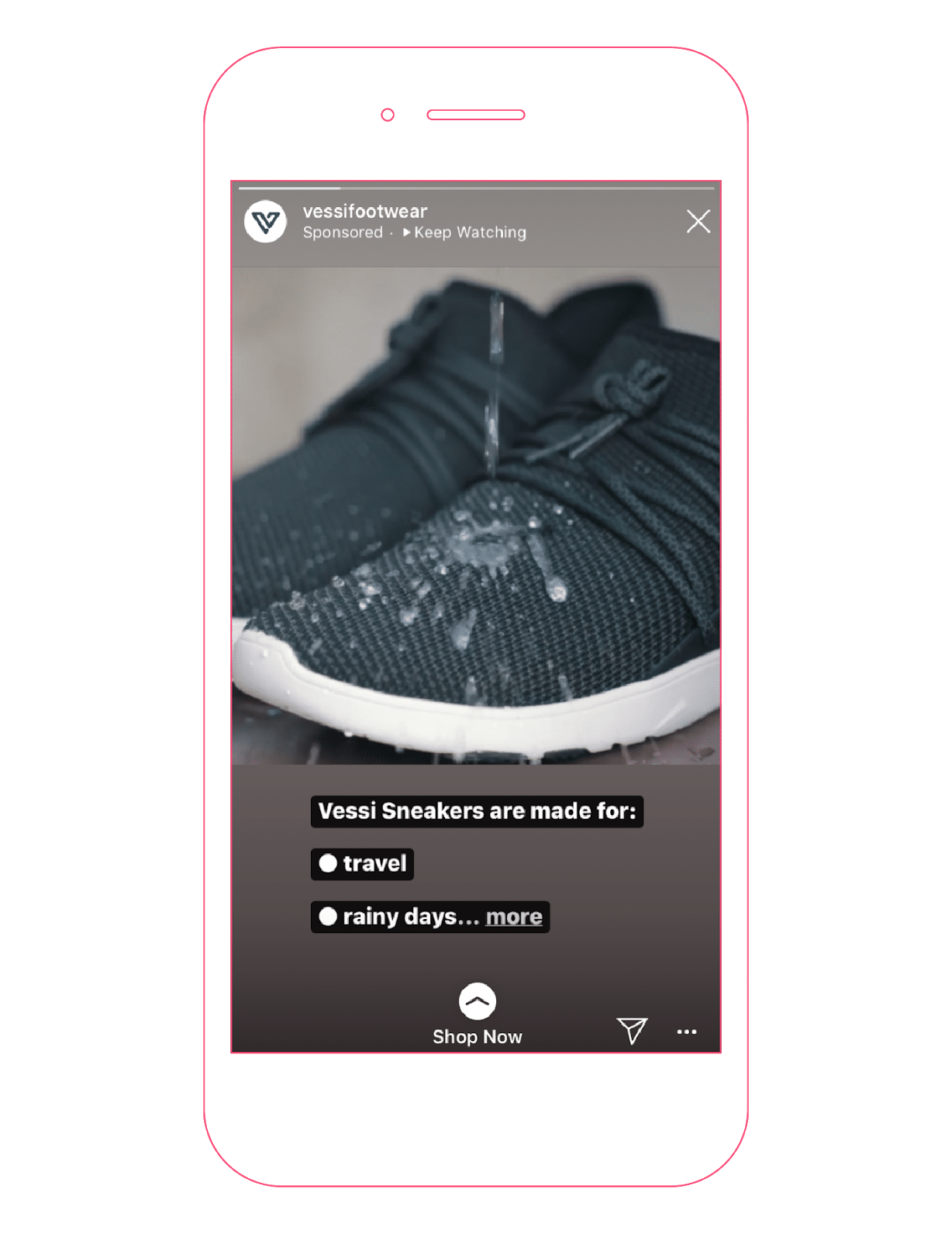
If you’re using Promo.com, you can export your videos to a variety of different ads formats, including vertical videos. If you’re using a different editor, you’ll have to do this manually, but it’s worth the extra step.
If you’re using multiple Instagram placements in your ad campaign (Newsfeed, Stories, In-stream, etc.) you’ll want to make sure to use your vertical video for the Stories placement. To do this, simply check this box during the ad creation process in Facebook Ads Manager and upload your vertical video.
Note that if you use this method, you’ll want to customize your on-screen text, as opposed to just letting Facebook rework your caption onto a background.
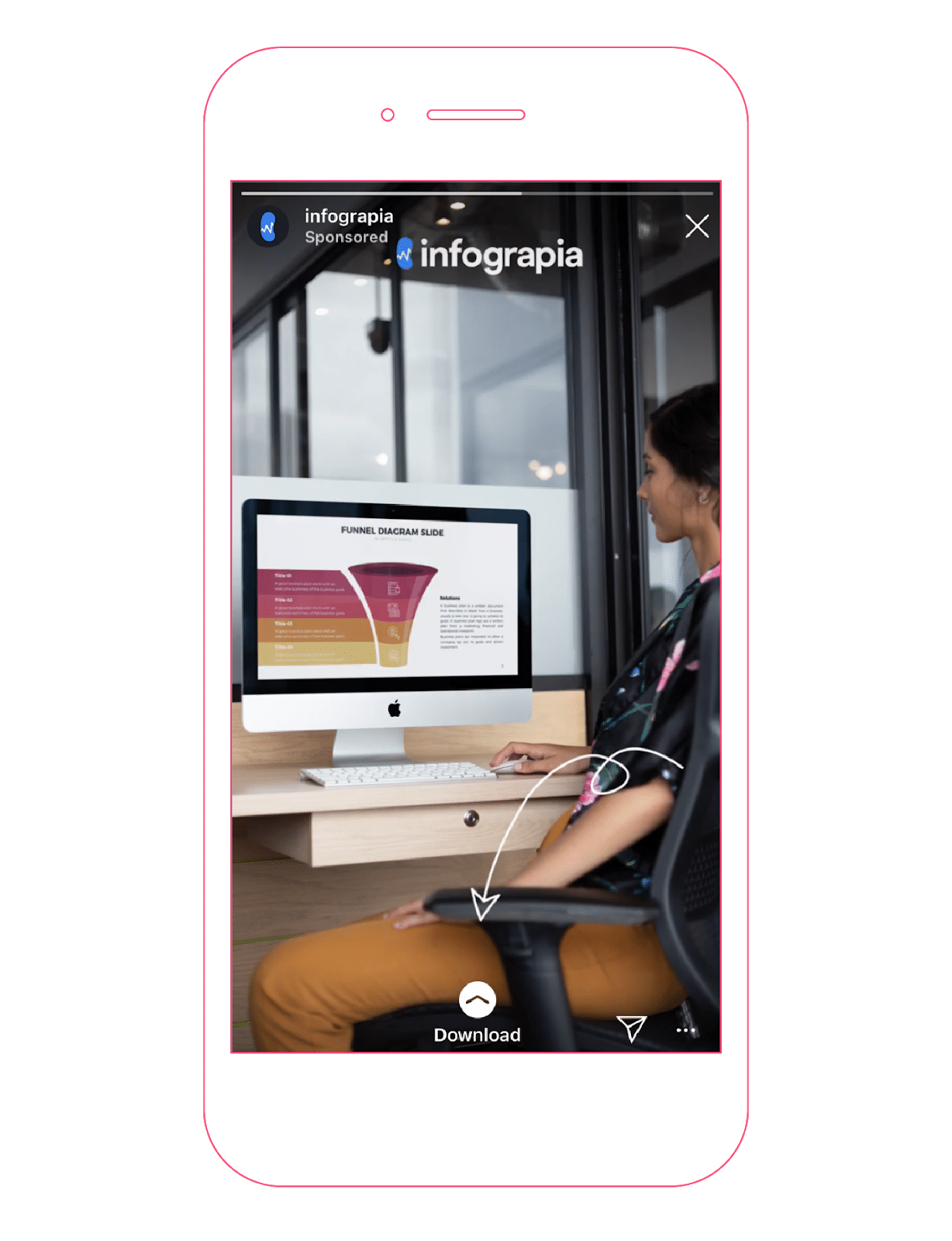
Stories strategy
One way advertisers can use Instagram Stories is the method described above—basically, just use the same strategy you’re already using for the Newsfeed, but use a video file tailored to vertical viewing.
The other, more advanced, method that digital marketers can use is to design create a strategy specifically built for Stories that takes advantage of the nuances of the placement. Instagram Stories is the land of stickers, gifs, behind-the-scenes video, and of course, the “Swipe up” CTA.
Consider helping your ads ‘fit in’ with the Stories atmosphere by designing them to look more like content using the techniques above.
For instance, technically you’re allowed 60 seconds for an Instagram Stories ad, but in the land of 15-second clips, an ad that long might stand out in an annoying manner if not executed properly. Consider matching the tone and style of organic Stories.
Pro tip: Check out our ultimate guide to Instagram Stories for inspiration.
Mobile ads best practices
If you’re creating ads for Instagram, you’re creating ads for mobile consumption. It is the second most popular free app download (trailing only YouTube) and has 2 billion active monthly users with half of those scrolling down through their feed every day.
According to Facebook IQ, Instagram video ads that are specifically created for mobile outperform those that are adapted from TV and online videos. Among the data from 759 video ads across 25 countries, mobile-first ads are watched for longer and are more memorable. Characteristics of mobile-first ads include:
- Shorter in length
- Show the brand in the first 3 seconds
Not exactly ground-breaking news, but a good reminder that the best-performing ads are not simply adapted from your other content, but made from scratch with a mobile-first mentality.
We’ve covered many of these best practices in this post, but to summarize, here are a few mandatory practices for your mobile Instagram ads:
- Use proper video file format and aspect ratios (details here)
- Keep your video ads to 15 seconds or under
- Use captions or on-screen text
- Provide branded hook in the first 3 seconds
- Make your video look and feel like organic content
- Use a CTA (or two!)
Follow these steps and you’ll be well on your way to high-converting Instagram ads on mobile.
How long can Instagram video ads be?
Technically speaking, video ads on Instagram can be up to 2 minutes long.
Strategically speaking, however, you won’t want to create Instagram video are that are much shorter than that. According to Facebook for Business, the recommended length for an Instagram video ad is under 15 seconds. Additionally, Sheryl Sandberg, Facebook’s COO, has stated that six-second video ads show “higher brand metrics across the board.”
While video length depends largely on the type of content you’re producing, the audience, and your advertising goals, it’s pretty clear that you should be planning to produce video content under 15 seconds for the foreseeable future. Need some inspiration? Check out some Instagram video ad examples.
Note: View any and all video length, aspect ratio, and more specifications for Instagram, as well as any other major social media network, in this blog post.
How do I optimize Instagram ads?
One of the most impactful things you can do to optimize your Instagram ads is proper campaign organization. Consider breaking up your overall ad campaigns into two sections—prospecting and retargeting.
Whether you’re using images or video, you should always be targeting two groups—’cold’ audiences and ‘warm’ audiences. Cold audiences are people who’ve never been exposed to your brand. You target these people by using their interests, demographics, and behaviors. Or, you can use Lookalike audiences that are based off data from your ideal customers to help you target potential customers. Either way, broadcast your brand message to these audiences loudly and proudly.
Be funny, be helpful, or be real, but don’t expect all of them to buy or become leads on the first touch. While the goal of this prospecting campaign can still be hard conversions like purchases or leads, your secondary goal is always engagement, video views, and website visits.
It’s a cold, hard fact that most consumers do not purchase (or become a lead, for that matter) on the first touch from a brand. We are exposed to too many marketing messages on a daily basis to take action on every single one. As a brand, in order to overcome that barrier and break through the noise, you need to earn the trust of your audience, which typically takes more than one touch, and that’s where retargeting comes in.
Related reading: How Does the Instagram Algorithm Work?
But retargeting with Instagram advertising isn’t just limited to website traffic, and that’s the reason that these ‘softer’ actions are still important is because you can use them to your advantage in your retargeting campaigns. With Instagram ads you can retarget by:
- Website traffic
- Product views (DPA)
- Video views
- Engagement with profiles, content, and ads
So in order to optimize your Instagram ad campaigns, you need to structure your account so that you’re targeting each of these audiences in a separate campaign. This gives you control over not only your messaging, but also helps you segment your results and feed data back into the algorithm so it can help optimize your ads automatically.
A note about hashtags: Most advertisers don’t use hashtags with Instagram ads because they don’t help with discovery and clutter the post copy. Instagram ads do not appear in hashtag searches, so in that sense they don’t optimize your ads. The exception to this rule is if you are using a branded hashtag (like #PromoteAnything) or adding voice to your copy (like #goals). Either way, use with caution!
Next steps
At this point you should be well steeped in the latest Instagram best practices. But talking about ads can only get you so far—you need to get out there and optimize your campaigns!
Promo.com offers tools to help you create pixel-perfect Instagram ads designed to increase your CTR while decreasing your stress levels.
